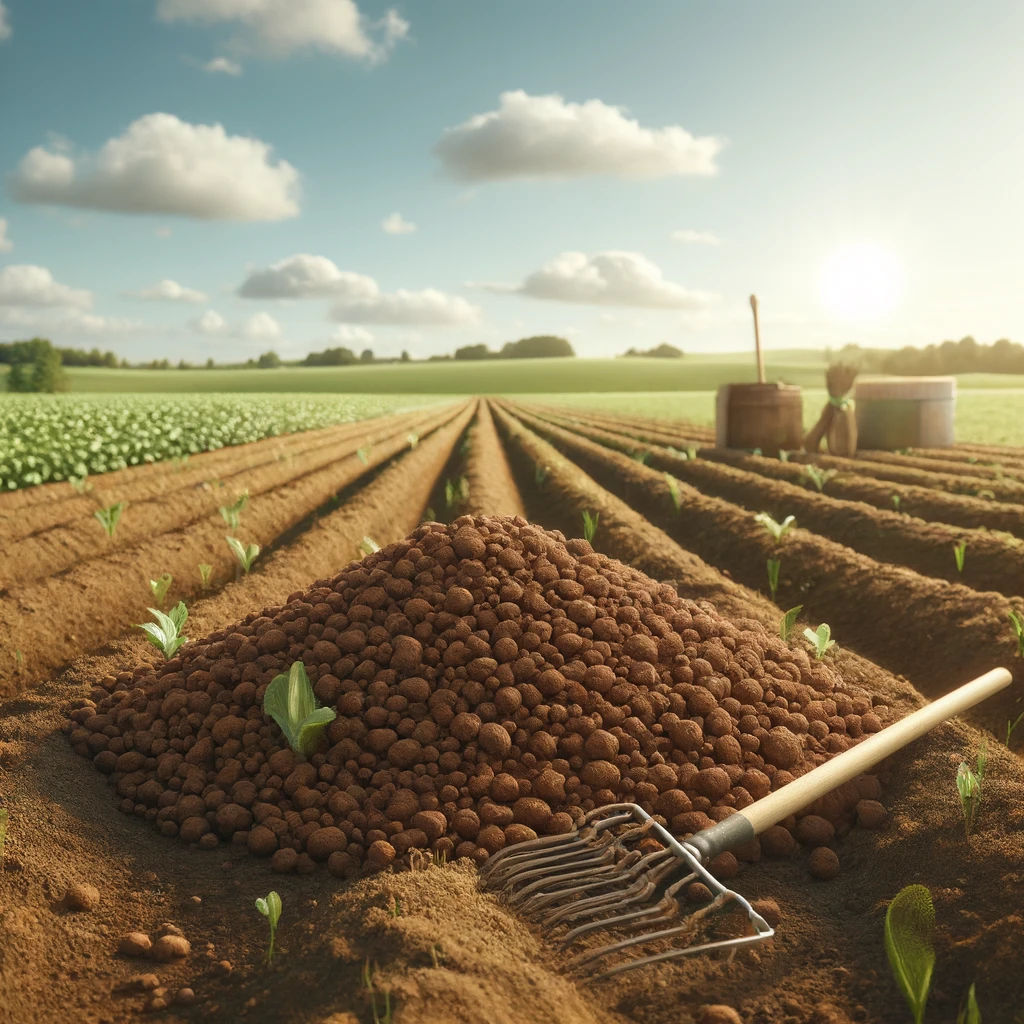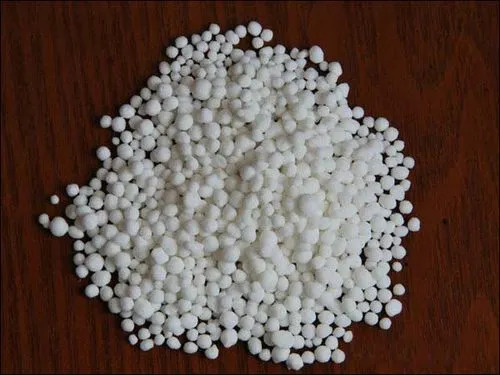Introduction to Dry Organic Fertilizer
The slow-release mechanism of dry organic fertilizers is also another noticeable difference from chemical and liquid fertilizers, which are largely synthetic with constituent parts designed and made to be immediately available for plants. Specifically, dry organic fertilizers are produced from belts consisting of primary and secondary debris of plants, manure, and mineral deposits. Most dry organic fertilizers are granulated to become handy soil improvers with low moisture content (10-15 per cent), making them easy to carry or spread.
Soil scientist Dr Harold Evans stresses that ‘We must study the composition of dry organic fertilizers in order to determine their origin, manufacture and the rates at which we must employ them.’ ‘It is imperative for sustainable agriculture to have both mineral fertilizers which provide necessary nutrients in a stable form,’ he emphasises, ‘and also organic fertilizers which supply a natural component to the soil when the key role of fertilizers is to rebuild soil organic matter.’ Bone and blood meal, fish extracts and seaweed are the ingredients used by manufacturers of common dry organic fertilizer products that slowly transform soil into a landscape for plants to flower and grow.
This kind of natural fertilisation is the only form that leads to increasing the organic content of the soil and providing food for crops over long periods of time while never running the risk of chemical run-off that comes with synthetic fertilizers.
Benefits of Dry Organic Fertilizer for Soil Health
Organic dry fertilizer can have significant positive impact on the health of the soil, improving its structure and fertility. Such fertilizers are very important to soil structure that effectively leads to more air in the soil and more ability of the soil to retain water. These physical improvements are important to allow plant roots to grow and for water conservation.
Sophia Martin, an agronomist, said: ‘Organic matter acquired by dry organic fertilizers literally looks like a sponge, retains water in the soil structure and releases it very slowly. This is particularly important in areas of aridity.’ In addition to saving money on water, dry fertilizers help to de-stress the earth by allowing it to conserve water.
Moreover, slow nutrient release is a significant advantage of dry organic fertilizer, because it prevents the sudden ‘spike’ in nutrients that can stimulate growth and lead to nutrient runoff in into groundwater or streams. Slow-release nutrition also helps keep soil fertility more balanced over the long-term, as organic matter helps restore nutrients to their original proportions in the soil over time.
In addition to these, the use of dry organic fertilizers helps to keep the friendly bacterial and fungal populations in the soil at a healthy level, which would otherwise be crowded out by pathogens, and provide nutrients that help with the mineralisation process, whereby raw, unavailable organic matter is transmuted in an available form for plant roots. ‘The proper microbial activity stimulated by dry organic fertilizers is one of the greatest benefits for organic soil health both in the physical and biological sense,’ Dr Martin notes.
These dry organic fertilizers can improve soil structure, retain water, and nurture a healthy community of soil microbes which ultimately improve the long-term health and productivity of the soil.

Comparative Analysis: Dry Organic Fertilizer vs. Liquid Organic Fertilizers
While deciding about the type of fertilizer, gardeners and farmers have to recognize the diverse aspects such as texture of soil, climate conditions, and types of plants, since there would be dissimilar qualities and limitations present in both dry organic fertilizer and liquid organic fertilizers.
Pros of Dry Organic Fertilizer:
- Longevity: Dry organic fertilizers are slowly releasable nutrient sources, which gradually support plants over a longer time period, which is a great aid for perennial plants and crops.
- Ease of Storage: Storage and handling is a lot easier because of the low-moisture content and granular form.
- Soil Enhancement: They aid in improving the structural stability of the soil, enhancing aeration and moisture retention.
Cons of Dry Organic Fertilizer:
- Slower Actuation: Nutrients are released more gradually, more or less a missed opportunity for plants in a nutrient emergency.
- Application: It’s difficult to apply uniformly, and the plants can burn if applied inappropriately.
Pros of Liquid Organic Fertilizers:
- Readily available for plants: Nutrients are more available for plant use from our vantage point, trees that were planted several decades ago or longer may seem isolated and ordinary. However, in the late Renaissance, a second long era of urban expansion began and lasted for a little more than two centuries. This meant that a relatively higher proportion of the land was forested and agriculture was confined to the periphery, allowing us to lead the relatively leisurely lives we know today.
- Uniform application: It’s easily and uniformly applied. The liquid fertilizers can easily reach every inch of soil better than others which can lose some portion of these fertilizers.
- Flexibility: They can be applied to the foliage directly. When applied to the foliage, this provides ‘foliar feeding’, which can correct micronutrient deficiencies rapidly.
Cons of Liquid Organic Fertilizers:
- More frequent application: They have to be applied more frequently than dry forms as the nutrients are available for a longer period.
- Higher leaching risk: Risk of nutrient leaching is high (especially if not managed) that can degrade environment if not managed.
- Storage and costs: Liquid fertilizers generally have a shorter shelf life than dry ones and are more expensive to use.
Case Studies and Examples:
- It showed that, in the arid environment, dry organic fertilizers foster better improvement of soil structure and long-term fertility than liquid organic fertilizers. In intensive vegetable farming, on the other hand, where rapid plant growth demands quick availability of nutrients, liquid organic fertilizers were preferred.
- Dr. Evans mentions, as an example, a vineyard in California that switched from liquid to dry organic fertilizers and not only saw an improvement in the quality of the soil but also had distinctive bloodroot vine produced more prolific and robust vines over the following seasons.
The choice between these two types of organic fertilizers will depend on the specificities of each agricultural system, as well as the local climate and context. Farmers will have to take into account the short- and long-term necessities of their food crops and local ecological situations when determining the best type of fertilizer to use.
Application Guidelines for Dry Organic Fertilizer
Best practices for applying dry organic fertilizer include a range of measures that support the safety of the environment around you, the safety of your plants, and the efficacy of using the fertilizer. Applying fertilizer is a measured process; the way that the fertilizer is applied can ultimately determine its efficacy as well as the safety and health of your garden or crop.
Best Practices for Applying Dry Organic Fertilizer:
- Classes of Gardens and Crops: There are different kinds of gardens and crops that are grown in our areas. So, for each of the gardens and crops, we need to have our own choice of dry organic fertilizer according to the type of the fertilizer rich in nutrients. For instance, the commonly grown seedlings like vegetables like tomatoes, kales desire much more nitrogen fertilizer while flowers like Jasmine flowers require a huge amount of phosphorous fertilizers for them to grow.
- Timing for the Season: Fertilizing at the right time is key. As the soil warms in early spring, applying dry organic fertilizer can enrich a planting area well before the plants would grow, setting them up for super growth. In the fall, when plants have stopped actively growing but retain leafy cover, fertilizer can be applied beneath those leaves to be absorbed before hard frost sets in.
- Dosages: ‘Don’t overdose!’ the programs say. ‘Read the recommended dosages on the fertilizer packaging!’ That much you already know, but what’s new is that, in many instances, you’ll need shockingly little to give your plants exactly what they need, without waste or harm. In fact, too much fertilizer can cause a condition called nutrient burn – where the soil actually becomes non-viable through too much nitrogen, a process that can take years to rectify. As for proper application, the square-feet rule is a handy one to remember. Most crops will do just fine if you sprinkle one or two pounds of dry organic fertilizer per 100 square feet.
Safety Tips and Considerations:
- Personal Protection: When using dry organic fertilizer, please wear gloves and a mask, and avoid dust inhalation and direct contact with the skin.
- Storage: Store dry organic fertilizer in a cool dry place away from sunlight to keep its efficacy.
- Avoid Over-fertilization: Overuse of dry organic fertilizer not only poses harm to the growth of plants but also leads to environmental pollution due to run-off and leaching.
Angela Patterson, a research horticulturist with the US Department of Agriculture who specializes in organic farming methods, suggests: ‘Fertility building is a year-round process. Regular soil testing can tell you what your soil has and what you need for your crops. Then you add what’s needed and nothing more – no waste, no overloading of the environment.
Using appropriate kinds of garden/crops, choosing correct season timing, and following recommended dosage, gardeners and farmers could effectively utilize dry organics. Thus, plants could grow better, soils could be healthier, and agriculture could become more sustainable.

Environmental Impacts of Using Dry Organic Fertilizer
When compared with synthetic fertilizers, they are also much kinder to the environment. Overall, the introduction of dry organic fertilizers has helped to make many aspects of agriculture less damaging to the planet. As ecological consciousness continues to rise within the agricultural community, dry organic fertilizers have come to be seen as a facilitator of farming practices that are more sustainable.
Environmental Benefits of Dry Organic Fertilizer:
- Less Chemical Runoff: Unlike synthetic fertilizers that can wash into our waterways to fuel a harmful algal bloom and eutrophication (where water super-saturated with nutrients suffocates all other life), dry organic fertilizers are bound more tightly with the soil and are released more slowly, greatly reducing runoff from the field, therefore limiting the impact on nearby water bodies and maintaining the health of the associated aquatic ecosystems.
- Improved Soil Health: Dry organic fertilizers build up organic matter in soil, which improves soil structure, soil fertility, and the reduction of erosion leading to the vital role of soil as carbon sequestration points in the carbon cycle.
- Biodiversity: Soil aggregates are better developed under dry organic fertilizers, and more heterogeneous than under synthetic fertilizers, which contributes to a generally higher biodiversity of soil life (from microorganisms to earthworms), essential to resilience against pests and diseases and to nutrient cycling.
Sustainability of Sourcing and Production:
- Renewable Resources: Dry organic fertilizers typically come from renewable resources such as animal manures, compost, or agricultural by-products. As such, there is no need to extract non-renewable mineral deposits in order to make them, which are mined using environmentally harmful techniques in the case of synthetic fertilizers.
- Energy Input: Dry organic fertilizers use less energy than the production of chemical fertilizer. In the production process of chemical fertilizers, lots of energy is needed, which severely increases its carbon footprint, while most of the dry organic fertilizers utilize the by-products of other processes, resulting in the avoidance of large amounts of additional energy expenditure.
Sustainability Advocate Comments:
Emily Carter, an environmental scientist who specializes in the use of organic fertilizer in sustainable agriculture, explains: “The shift to using dry organic fertilizers is an essential component of reducing agriculture’s environmental footprint because by encouraging a holistic perspective on the health of soils, not only do we enhance the growth of the plant, but also build an agricultural machine that can function in harmony with long-term ecological stability.”
Overall, using dry organic fertilizer benefits the environment a great deal since it leads to more sustainable farming that is beneficial to the earth and also the wider ecosystem. The more we know this, the more we will use dry organic fertilizer and the greener the planet will be.
Conclusion
As the case of the dry organic fertilizer NFM demonstrates, this understanding gives farmers and gardeners a very good reason to foster healthy and sustainable farming practices, and to help us all do a much better job of caring for the planet’s only habitable environment of the future.
It is absolutely necessary for those who insist on improving agricultural productivity while intensifying the ecological and environmental health of our mother earth to select a suitable type of dry organic fertilizer. The world should shift its focus to the trend of organic and sustainable farming.
As humanity is confronted by the rapidly globalising issues of climate change and environmental degradation, an increasing need for sustainable agricultural practices becomes evident. The development of dry organic fertilizer presents a compelling case for healthier soils, improved crops and a more sustainable agricultural future.
Here are three scholarly references on the topic of dry organic fertilizer :
- Compost Tea as Organic Fertilizer and Plant Disease Control: This study explores the utilization of compost tea in organic farming, highlighting its benefits in controlling plant pathogens and enhancing plant growth, which supports the reduction in the use of synthetic fertilizers and pesticides.
- The Effects of Biochar-Based Organic Fertilizer and Mineral Fertilizer on Soil Quality, Beet Yield, and Sugar Yield: This research investigates the impact of biochar-based organic fertilizer in comparison to mineral fertilizers on soil quality and crop yields. The study demonstrates significant benefits of organic fertilizers in improving soil conditions and enhancing crop productivity.
- The Effects of Chemical and Organic Fertilizer Usage on Rhizosphere Soil in Tea Orchards: This article discusses the long-term impacts of organic versus chemical fertilizers on soil health, particularly focusing on tea orchards. It details how organic fertilizers improve soil microbial activity and overall soil health, contributing to better crop quality.







